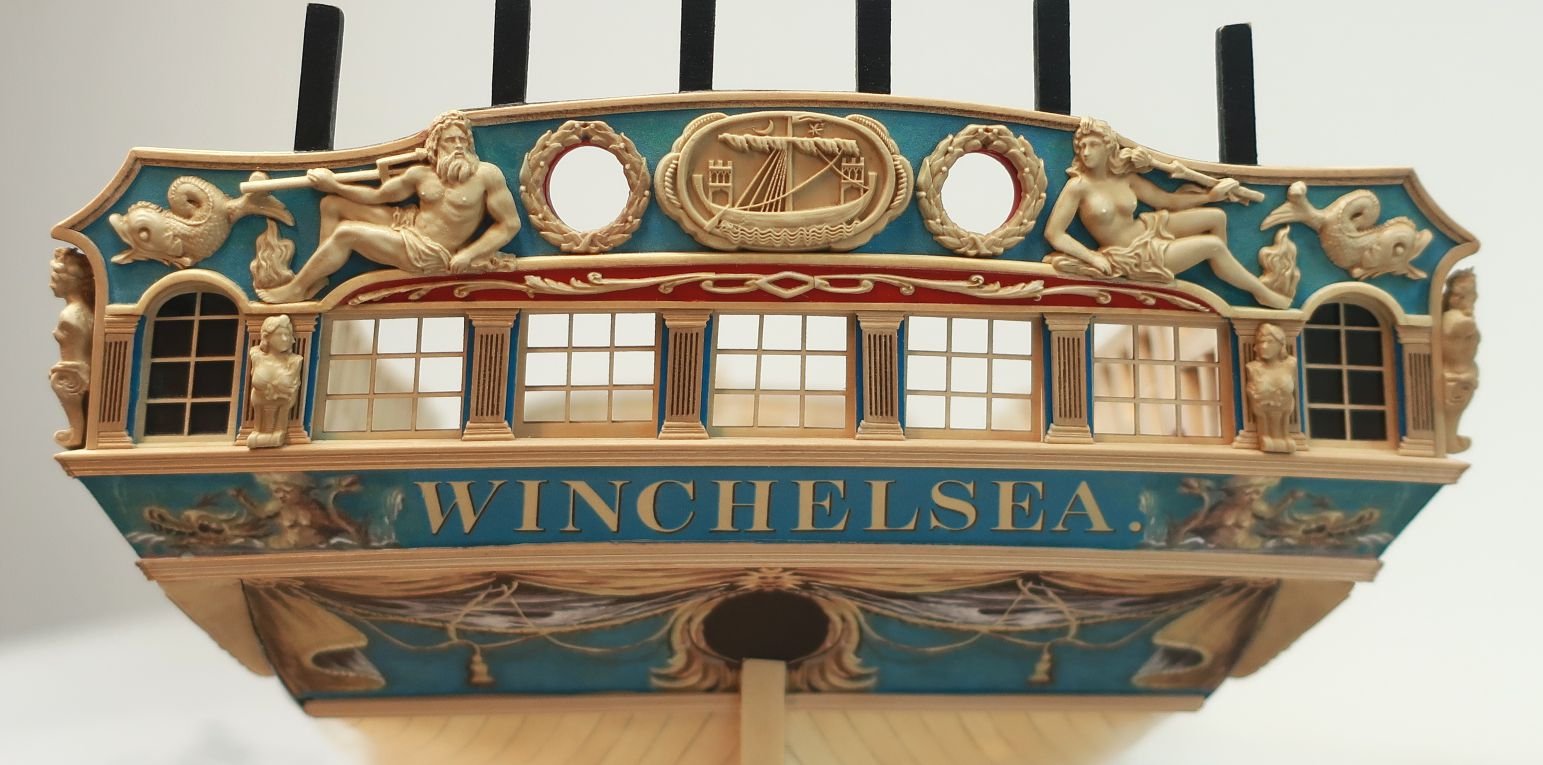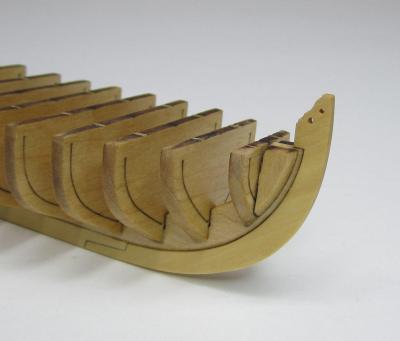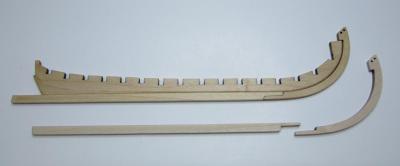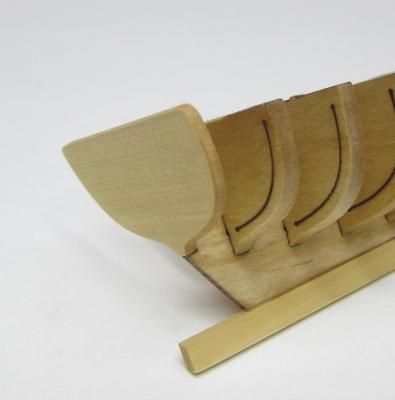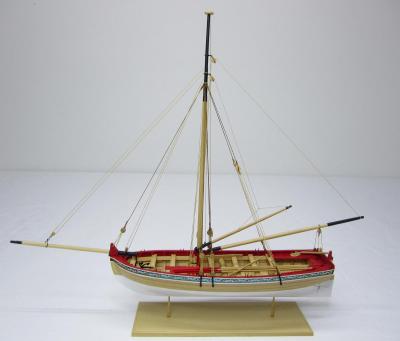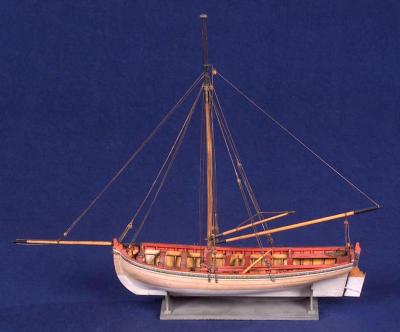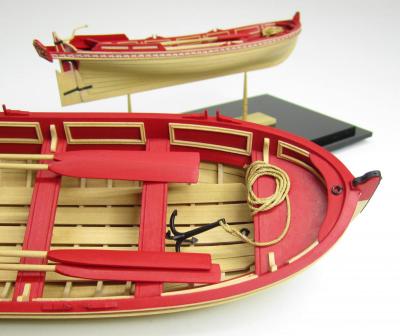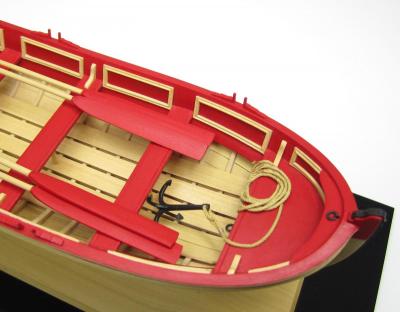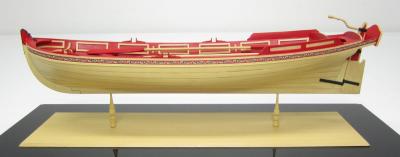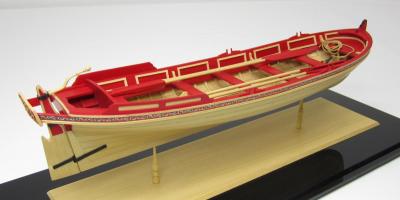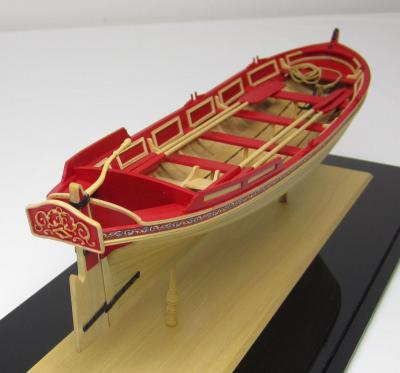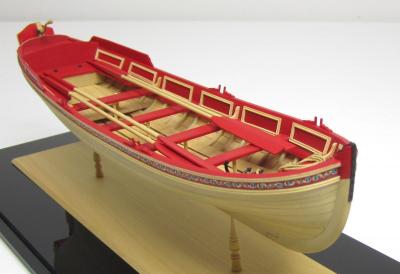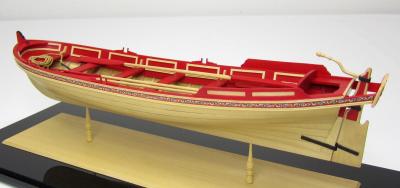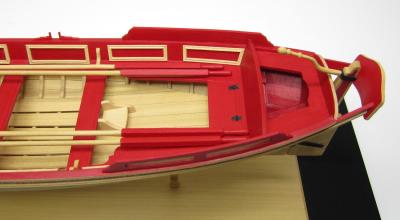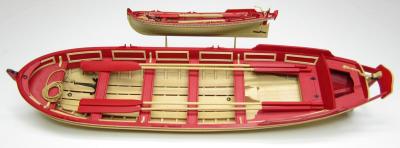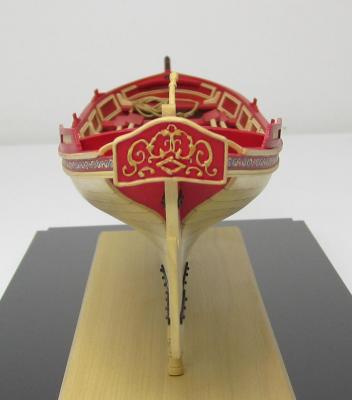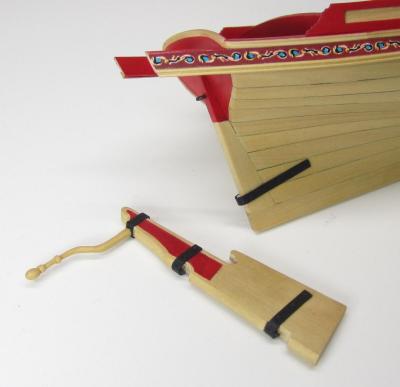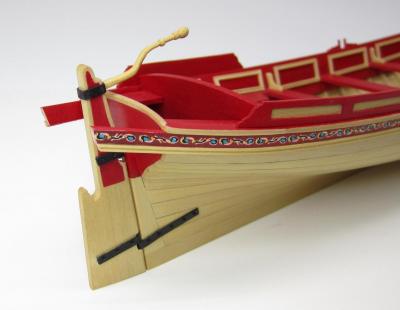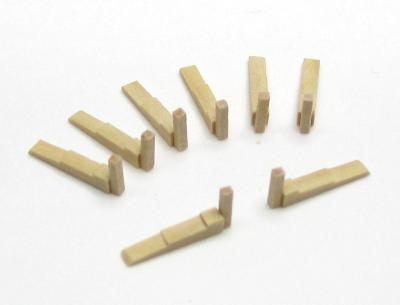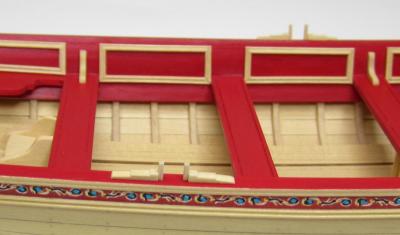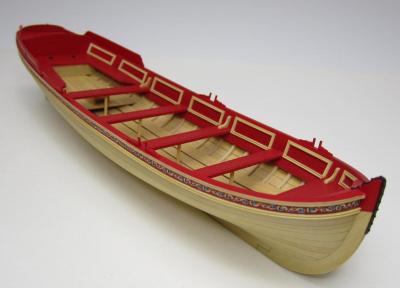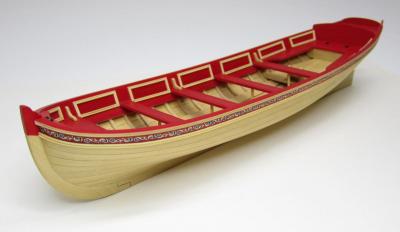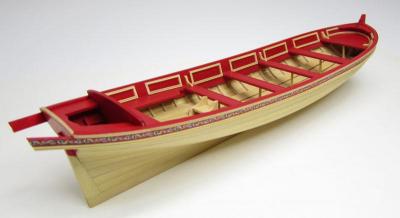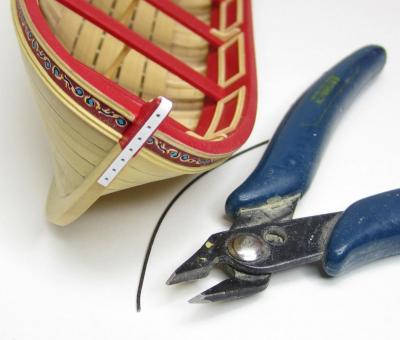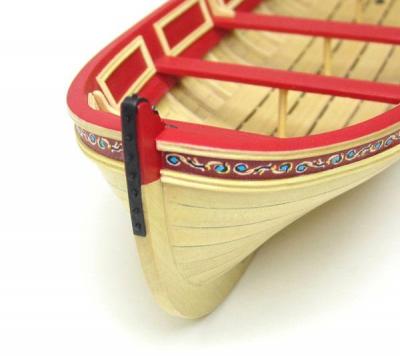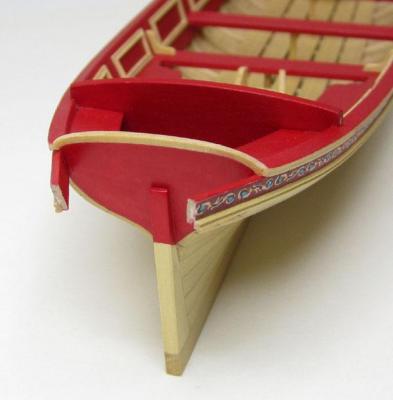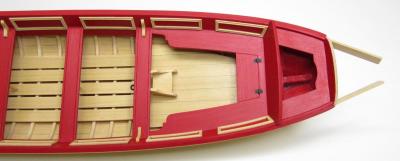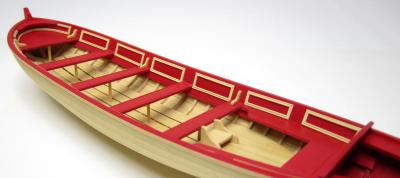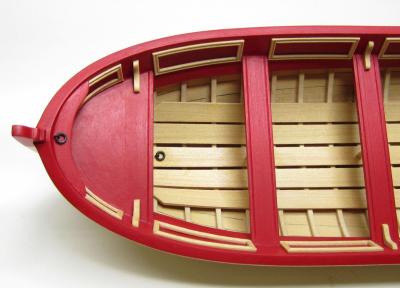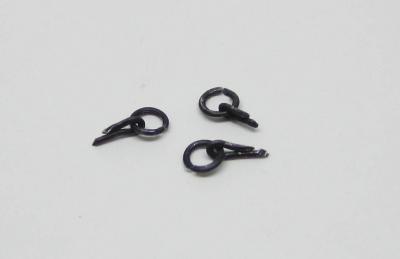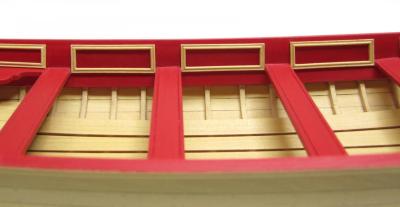-
Posts
9,044 -
Joined
-
Last visited
Content Type
Profiles
Forums
Gallery
Events
Everything posted by Chuck
-
You can still buy that book new...its $78 Euros. So used...depending on condition, about half the price. As far as your models....unless we had a list of what they are we couldnt say. Chuck
- 48 replies
-
- Bernard Frolich
- The art of ship modeling
-
(and 1 more)
Tagged with:
-

Solder brass rod for deadeye
Chuck replied to cog's topic in Metal Work, Soldering and Metal Fittings
Check out the tutorial here in the database for silver soldering. Chuck -
To start...the slotted false keel was tapered from the bearding line to the outside edge. This created a simulated rabbet once the two keel pieces were cut to shape and glued into position. Then the 16 bulkhead frames were added. I had these laser cut to save time. They were designed in a way that the center sections are removable. They are held to the frames by small tabs. Once the hull is planks I will file through the tabs and snap out the center sections. Care must be taken to square up the bulkheads with the keel and ensure they are straight so the the proper hull shape can be obtained. You could further stabilize the bulkheads by gluing a temporary batten across the tops of them which will be removed before I start filing the center sections free. But I am not a heavy handed builder so I just started fairing the hull immediately. I use d alight touch while beveling the outside edges of he bulkheads. The transom and bow fillers were added just prior to the start of planking.
- 162 replies
-
- 18th century longboat
- model shipways
-
(and 1 more)
Tagged with:
-
This 26 foot long was designed based on a contemporary model in the National Maritime Museum shown below. This longboat was used circa 1750-1760 and was typical of this type of small craft. Plans for this model and MS kit prototype were drafted based on the contemporary drafts from the period. The longboat has been decorated to match the NMM model that inspired it. Even though this model was inspired by another, many other color schemes are possible. There are many more contemporary models that show various decorative themes. Another very good source of information on these small boats is “The Arming and Fitting of English Ships of War” by Brian Lavery. This book discusses the many details you sometimes find on these Longboats. Another good reference is "The Boats of Men of War" by W.E. May. Some references to these book will be mentioned throughout this project. This scratch project was the prototype for the Model Shipways kit. An image of the finished model is posted below and can be compared to the contemporary model above. I Also below you will find the PDF instructions for the kit which has more details.
- 162 replies
-
- 18th century longboat
- model shipways
-
(and 1 more)
Tagged with:
-

Anchor making
Chuck replied to dafi's topic in Discussion for a Ship's Deck Furniture, Guns, boats and other Fittings
Thank you very much...I just added this to the database. -

Painting Templates
Chuck replied to dafi's topic in Painting, finishing and weathering products and techniques
Can you give us the info and links where you had the stencils made??? Chuck -

USF Confederacy by Rustyj - FINISHED
Chuck replied to Rustyj's topic in - Build logs for subjects built 1751 - 1800
Rusty...Its like seeing an old friend again....I am so glad to see it here. Chuck- 149 replies
-
- confederacy
- frigate
-
(and 1 more)
Tagged with:
-
Now I only had to add a few small details to finish it up. This was a relatively short project but was a lot of fun to build. I created the oars in two pieces. The handles were shaped on my dremel which I used as a poor man's lathe. Once it was chocked up....I sanded and filed the square strip until it was rounded to spec. But I left the square section untouched to create the final look which was common for the period. The grapnel was a casting from Model Expo. Seeing as this was a prototype for a future kit, I was asked to use one that they already had in stock. It was a nice fitting and was perfectly scaled. That finished off the project. I turned the display pedestals with my Dremel because they were small enough to chock. They arent a perfect mating pair but look OK to my eye. Thanks for looking and as always, comments and questions are appreciated. Chuck
- 49 replies
-
- pinnace
- Syren Ship Model Company
-
(and 1 more)
Tagged with:
-
Next up was the rudder. It was straight forward to cut it out of a sheet of boxwood. Then it was tapered so it would narrow aft, and the fore side was shaped and slotted for the pintles and gudgeons. I used styrene once again for the pintles and gudgeons. Its easy to bend although you must do it slowly so it doesnt break. If you go slowly it gives the plastic a chance to bend rather than fracture. It drills remarkably well. The bolts heads were simulated as I mentioned earlier. The tiller was shaped by hand. I patiently filed and carved it from a larger piece of boxwood. Once the rudder was placed in position, I could glue the the decorative transom in place as well. I created it by sculpting the details on a thin sheet of wood with Sculpey. The wood blank was 1/32" thick and cut to the shape of the transom. I added the sculpted details a little at a time and baked it in my toaster oven to cure it. Once it was completed I made a mold and casted a one piece resin copy which is what I used on the model. Chuck
- 49 replies
-
- pinnace
- Syren Ship Model Company
-
(and 1 more)
Tagged with:
-
I built the four oarlocks next. They were made with two pieces as seen below. They were glued on top of the cap rail and then painted. To finish off the details on top of the cap rail, I constructed the paneled splash boards by the cockpit. Each splashboard was mad using two layers of 1/32" thick boxwood. One was solid and the outboard one was cut out to create the panels. Once glued together they did a good job of simulating panels. They had to wet down and bent with heat from an old hair dryer. They were bent to conform to the curve of the cap rail. Finally...they were carefully painted as I tried to leave the center panels natural. Chuck
- 49 replies
-
- pinnace
- Syren Ship Model Company
-
(and 1 more)
Tagged with:
-
Looking great. Nice job on the plating...that came out particularly well!! Chuck
- 127 replies
-
- model shipways
- syren
-
(and 1 more)
Tagged with:
-

US Brig Syren by Gahm - Model Shipways
Chuck replied to Gahm's topic in - Kit build logs for subjects built from 1801 - 1850
What a beauty....I am so glad you posted the log again!! Thank you sir Chuck -
Thanks Guys Ryland...yes they do...the photos show a lot of detail and every little paint smear and mistake...LOL I am using many pictures because my local New Jersey club will building this model as their next community project. We have fifteen signed up to build it. Its going to start in a few months. I guess I will be building a third Pinnace model very soon. Chuck
- 49 replies
-
- pinnace
- Syren Ship Model Company
-
(and 1 more)
Tagged with:
-
Yupp....But wait until you have the inboard planking on....I would aalso use that second layer of the sheer strake to adjust the height of the shear if need be to match the other side...If your starboard is a little low....then add the shear strake a little higher to compensate. Then put the cap rail on top of that after you sand teh extensions down later. But I am only talking about a slight correct if need be. You see how the bort side dips a bit where those extensions are higher?? The frontal bow shot shows that. Chuck
-

Chamfer a plank
Chuck replied to Thom's topic in Planking Techniques's Click Here for Topics dedicated to planking!!!!
I usually create a homemade sanding stick. Its easier when you make one that is a little wider...say 1/2" wide. Tou can choose whatever grit sandpaper works for you. I use 220 grit. Chuck -
I use Corel Draw to draft all of my plans too. For the friezes I just used the ordinary weight paper that you print day to day stuff on. Its thin and I didnt want to go thicker. It also prints flat with no sheen like some papers. I do however sometimes go with an eggshell color but I didnt do that this time. I will have to send you some files via email some time. I am sure you could laugh like I do when I read that there are over 100,000 lines drawn on a plan sheet. Its nuts. All done one at a time. For plans I think Cad is overkill. 2D is fine for me. AlexM also uses Corel Draw. I have taught others in a few hours how to use it to draft plans over the phone. Its a nice program. I think a min tutorial is going to be in the works...its cheap if you buy an older version or get the student discount...A copy can be had for $99. So I like to say good things about it. Chuck
- 49 replies
-
- pinnace
- Syren Ship Model Company
-
(and 1 more)
Tagged with:
-
Thank you so much Michael.. The next task was to start detailing the outboard doo-dads. First up was the frieze I recreated the frieze on my computer using Corel Draw. Then I printed it out on my inkjet printer and used some fixative to prevent smudges. I actually use hairspray because it has some UV protection and its cheaper..I prepared one in red and another in blue. I decided to use the red one. With the paper frieze in position I was able to use the bottom edge as a guide to glue a molding strip across the hull. It was scraped to create a beaded edge. The transom was carefully painted red but I left a 1/16" natural border around the outside. At the bow..I added the protective iron strap. I sometimes use paper for this but this time I used a styrene strip. It bends easily enough and doesnt fray when you drill through it. I drilled a series of holes to insert some 22 guage wire. I snipped off the excess so the "Bolts" would stand proud of the surface. I carefully painted it black afterwards....you can see that it could have been a bit neater. I think I cleaned it up a lot after taking that picture.
- 49 replies
-
- pinnace
- Syren Ship Model Company
-
(and 1 more)
Tagged with:
-
Then it was finally time for some less time-consuming details inboard. I added the knees on each side of the thwarts and the steps to get in the cockpit. I left these unpainted as Thought it would look better. I also added the locker hinges on the cockpit seat, the iron rings bolted on the floorboards and the stanchions under each thwart. It was finally coming together inboard. For making the rings...I created the rings from 22 gauge black wire. Then I bent another piece around them as shown below. After they are inserted in the floorboards it looks more to scale than if I used a second eyebolt and inserted the ring. The eye of the eyebolts always look too big to my eye. Chuck
- 49 replies
-
- pinnace
- Syren Ship Model Company
-
(and 1 more)
Tagged with:
-
Next it was time to create the decorative panels inboard. I used thin strips of boxwood. 1/32 x 1/16". These were scraped to give them a nice fancy profile. The corners of each panel were mitred to keep things neat and tidy. This took some considerable time to complete. As you can imagine...it required a lot of paint touch up. From this point forward I used yellow carpenters glue exclusively because it made clean up easy. After each part of a given panel was glued into position...just a wet brush could be used to remove any excess that squeezed out.
- 49 replies
-
- pinnace
- Syren Ship Model Company
-
(and 1 more)
Tagged with:
About us
Modelshipworld - Advancing Ship Modeling through Research
SSL Secured
Your security is important for us so this Website is SSL-Secured
NRG Mailing Address
Nautical Research Guild
237 South Lincoln Street
Westmont IL, 60559-1917
Model Ship World ® and the MSW logo are Registered Trademarks, and belong to the Nautical Research Guild (United States Patent and Trademark Office: No. 6,929,264 & No. 6,929,274, registered Dec. 20, 2022)
Helpful Links
About the NRG
If you enjoy building ship models that are historically accurate as well as beautiful, then The Nautical Research Guild (NRG) is just right for you.
The Guild is a non-profit educational organization whose mission is to “Advance Ship Modeling Through Research”. We provide support to our members in their efforts to raise the quality of their model ships.
The Nautical Research Guild has published our world-renowned quarterly magazine, The Nautical Research Journal, since 1955. The pages of the Journal are full of articles by accomplished ship modelers who show you how they create those exquisite details on their models, and by maritime historians who show you the correct details to build. The Journal is available in both print and digital editions. Go to the NRG web site (www.thenrg.org) to download a complimentary digital copy of the Journal. The NRG also publishes plan sets, books and compilations of back issues of the Journal and the former Ships in Scale and Model Ship Builder magazines.

